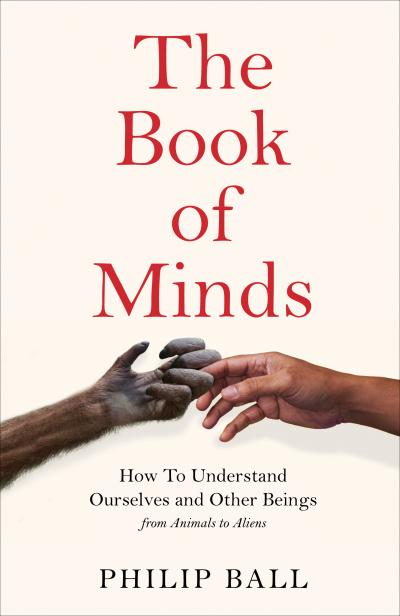Years ago, one of the leading mathematicians in the country tried to explain to me what his real work was like. When he was on the case, he said, he could be doing a range of other things – having his morning shave, making coffee, walking to a meeting – but all the time, “I am holding the problem in my mind”.
Which didn’t help much. I did once know how to do some maths, but still had little idea what he meant. Where in the mind is a problem held? What holds it? Does the metaphor extend to putting it down and picking it up again, to examine it from a different angle? I have about as much notion of how it feels to experience mathematical structures and their possibilities as I do of seeing in infra-red, or navigating by directly sensing Earth’s magnetic field.
One oblique but often quoted way of defining minds is thus also less helpful than it sounds. Only if some entity has a mind does it makes sense to ask what it can experience from its own very particular point of view - there must be “something it is like” to be that entity, . But can we know what it is like to be, say, a bat, as the philosopher Thomas Nagel famously asked? Yes, it’s a mammal and so are we. But a bat takes flight in a space of ultrasonic pulses and echoes, tracking its position in a cave, other bats on the wing, insect prey, or all three at once. So bat-mind, or bat-consciousness – and bat-Umwelt, to use an old term Ball introduces later in his book – is pretty unfathomable.
And if a creature that evolved on the same planet seems to inhabit an alien reality, what of minds that evolved elsewhere, or minds that we build here, inside our machines? How are we to think about them?
Well, argues Ball, we may not be able to explicate the workings of minds as well as we want, but we can take stock of the qualities and capacities that minds have. That involves looking at minds of different kinds. We can learn from what humans experience, and how we think, whether from personal testimony or controlled experiment. Yes, there is never any certainty about what someone else thinks or feels, but we do have handy technologies like language and writing that allow us direct access, of a kind, to other minds. Nowadays they are supplemented by fancy new toys like magnetic resonance imaging, which show which parts of the brain are the most active when thinking happens.
 We can also weigh the thoughts and cognitive powers of other creatures, usually inferred from their behaviour, although we can plant electrodes in their brains or ganglia, too. And we can consider the output of what journalists used to call “electronic brains”, and how clever algorithms can allow computers to do things that would require intelligent understanding if a human was doing them.
We can also weigh the thoughts and cognitive powers of other creatures, usually inferred from their behaviour, although we can plant electrodes in their brains or ganglia, too. And we can consider the output of what journalists used to call “electronic brains”, and how clever algorithms can allow computers to do things that would require intelligent understanding if a human was doing them.
That’s not all. There are plenty of predictions about how computers will develop further to reach a genuine thinking machine, with a measurable non-human intelligence. And we may wonder what the place of the mind might be on other planets, with other kinds of life.
The way to organise all this – the by-now large inventory of minds known and as yet unknown – is, Ball suggests, to define a multi-dimensional “mindspace” onto which possible minds can be mapped. Minds may use a bunch of abilities, which can – perhaps – be measured. Things like sensing, learning, or remembering. Some minds are good at integrating information to build representations of the world. Some like ours, achieve the magic trick of inflating a bubble of consciousness, and begin to contemplate themselves. But different organisms, different systems, and different imagined entities, achieve them at different levels, or perhaps do some well but others not at all. Analysing all the things that look superficially as if they must be doing some kind of thinking, in this way, allows sensible comparisons, while avoiding any dogmas about what a mind must be capable of to count as a mind.
That all sounds quite elaborate, but it is introduced speedily and clearly in the second chapter, and gives both author and reader a purchase on a huge amount of material as Ball goes on to roam happily through all the disciplines that have tried to grapple with the mind, from philosophy and psychology through to biology and brain science, and on to computing and artificial intelligence.
Mindspace also helps maintain us to perspective when examining tricky questions like whether other creatures can be smart. In certain ways, obviously yes. But other species’ intelligence – bees signalling the direction of newly discovered nectar, say, or a crow learning simple tool use, or an octopus in a tank recognising its keeper – is typically specific. They tend not to apply their skills to new situations, or to imagine things being otherwise. Although the collective abilities of other creatures are impressive, humans still stand out for our abilities to generalise, and to repurpose memories to build possible futures.
The comparative approach remains useful when he grapples with machine minds. Organic minds only exist to serve bodies, and the ways they build meaning from information are governed by their inescapable goals of survival and reproduction. True, for us that has lifted us into a realm where we can do things far removed from immediate advantage, like making art. But it still contrasts with machine minds, which are made to do a task defined by their builders. As ever, there are puzzles aplenty in the discussion. Suppose a deep learning algorithm, the currently fashionable basis of the best-performing machine intelligence, could mimic a human in full possession of a “theory of mind”, in the sense of knowing about other people’s points of view and intentions. Would a computer running such an algorithm have any real knowledge about what a person under observation was actually thinking? I think not.
It’s good to view any but the most modest claims for current artificial intelligence scepticallyIt’s good to view any but the most modest claims for current artificial intelligence sceptically. Ball’s own more general claims are modest too, in some ways, which is a welcome change from the time, not so long ago, when authors with larger egos favoured insistent titles like Consciousness Explained (Dan Dennett) or How the Mind Works (Stephen Pinker). He has a little more new science to go on than they did, but concludes – correctly – that it would be premature to signal so confidently that understanding the seat of our thoughts is in sight.
There is nothing modest about the scope of the book, though. Adopting the notion of the space of possible minds as his organising principle allows him to take in minds and proto-minds, past, present and future; minds naturally evolved and minds artificial, terrestrial and extra-terrestrial. This yields a long book that has much to fascinate. By the closing chapters, though, which consider the stronger predictions about future artificial intelligence, and the prospects for evolving consciousness elsewhere in the universe, it is impossible not to notice that the discussion is still mostly speculative, the evidence sketchy or (as yet) non-existent.
For me, that crystallised a doubt about the book’s opening move. It is easy to harbour misgivings about whether human minds are equipped to fathom their own workings – brains are costly to run, evolutionarily speaking, and there seems no particular reason why they should be able to do this. The expansive, non-dogmatic formulation of mindspace as a domain that we can try and map, however tentatively, looks, at first, as if it can serve as a counter to such doubts. But the thinner conceptual diet of the later chapters is a reminder that the exercise still relies on the only kind of mind that we know well trying to develop a comprehensible description of itself. Indeed, the effort to expand the description to include other possible minds may ultimately make the job even harder. So while this is a splendid overview of all our best efforts to understand minds, I was left unconvinced that we have got much of the way there. If you want an overview of the state of the art, this will do nicely, but know that the art is still not in much of a state.
- The Book of Minds: How to Understand Ourselves and Other Beings by Philip Ball (Pan Macmillan, £20.00)
- Read more book reviews on theartsdesk















Add comment